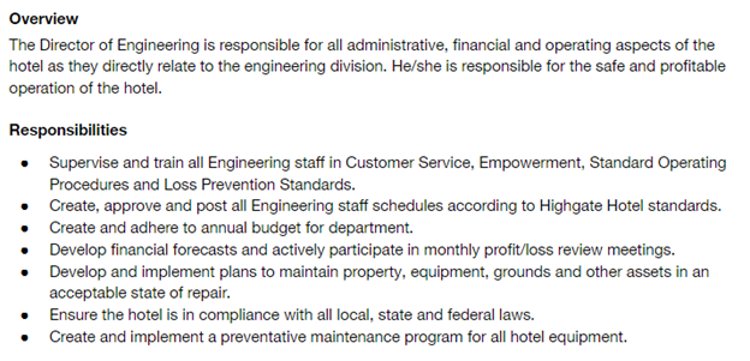1 min read
Most Staffing Firms are Not Built to Scale, But to Survive
Most staffing firms don’t struggle to scale because their teams aren’t working hard. They struggle because they don’t have a real go-to-market...

Do you recall the old marketing slogan from General Electric, “We bring good things to life.” This slogan was heard at the end of all of their commercials throughout the 80’s, 90’s and even into the early 2000’s. What most people don’t know however is that the engineering team at GE had their own internal slogan, “to build a better product, you  need to write a better product spec.”
need to write a better product spec.”
The term “product spec” is short for product specification or product specification document. A product spec is a blueprint that describes what you’re building, who you’re building it for and why, and what the final outcome or final product should be. A well-written and clearly understood product spec is about clarity. The more information you have going into building a product or in our case-searching for candidates-the more clarity you give everyone working on the project (job requirement). A well-written and well understood product spec ensures you deliver the desired product. The GE engineering team learned that the underpinnings of the marketing slogan, “we bring good things to life” was building a better product spec.
This mantra should be adopted, applied and ingrained by all recruiting professionals because every successful candidate search begins and ends with a strong product specification document; aka a job description. Your understanding or lack thereof a client job description will always directly influence and impact:
Suffice it say, learning how to read and understand a client job description is pretty darn important. Yet it is one the least talked about recruiting skills.
In this blog post, How to Read, Understand a Client Job Description, I'm going to highlight some of the challenges client job descriptions present for recruiters and strategies for overcoming those challenges.
The Problem with Job Descriptions
Most job descriptions are pieced together like Frankenstein and created by way too many people. The hiring manager may attempt to write it from scratch or dig up an older version drafted years ago—when the departing employee first started. It is then offered to their manager for review, edits and comments. Then, the marked-up draft is passed up the chain of command to senior executives who have no clue about what the person who fills the role actually does because they are so far removed. After the initial round of edits and revisions, a human resources professional will weigh in with their thoughts and opinions to ensure that there is no offensive or discriminatory language. If it is shown to an attorney, then the legal jargon and disclaimers will be added. By the time the job description goes through all these channels, it will most likely morph into something completely different than what the hiring manager initially drafted and intended from the beginning. Since corporations are conservative by nature with respect to hiring, there will almost never be any life, levity or brutal truthfulness found in a job description. You will not find any creativity or excitement in a job description. They are dull, boring and lifeless. If that were enough, job descriptions can and will vary from company to company. Sorry, just speaking the truth here!
Recruiters who rely exclusively on job descriptions and fail to discuss the position with the hiring manager will encounter numerous challenges. For example, many job descriptions are nothing more than a boilerplate template written by an internal recruiter or HR department. In fact, many employers write general job descriptions and keep them posted as a way to build a candidate pipeline. These job descriptions were never written for a specific job but as a way to build a candidate pipeline. Not only that, job descriptions are often old and outdated. You’re probably wondering, “why would a hiring manager share an old and outdated job description with their recruiter? The answer is easy. Writing a job description IS A PAIN IN THE NECK. It takes time on behalf of the hiring manager to physically sit down and think through what they really need and want in a candidate. It also takes time to document a concise job description. Simply put, writing a job description is not easy and it’s not fun.
The other challenge with job descriptions is that many hiring managers simply don’t know what they need or want. Sounds crazy right? It’s true. Most managers know they need help and they have a general idea of the type of help they need. However, because there are so many other moving parts in a business that happen behind the scenes, writing an actual job description can be difficult. For example, in many companies, especially large organizations, resources are often shuffled around and shared amongst groups and teams. Priorities change on a moments notice; what was important yesterday is no longer important today. Re-orgs, budget freezes, new product launches, mergers and acquisitions, promotions and attrition all impact a company’s hiring plans.
Other job descriptions may consist of just a few bullet points written by the hiring manager in the text of an email message while other job descriptions-and perhaps you have seen them-are nothing more than a long laundry list of skill sets and qualifications while others appear to wrap two or even three different jobs into one single job description.
It is for these reasons that I strongly encourage recruiters to always strive for having a physical conversation with the hiring manager to ensure you understand the requirements and their expectations. Remember, every successful candidate search begins and ends with building a strong job description. Not only that, having a conversation with the hiring manager enables you to help the hiring manager decide what they need or don’t need in a candidate. It gives you the opportunity to position yourself as the authoritative expert and thought leader.
How to Read a Job Description
Most hiring managers front-load job descriptions by listing the most crucial responsibilities of the job at the top. Generally, the top three bullets on a job description represent 80% or more of what a candidate will be expected to do for a job. Often, when job descriptions are being written, employers jot down—in order—the first duties that come to mind for the position. As you get further down the list, typically, these bullet points have come to the mind of the employer later, representing a smaller percentage of the job duties and requirements.
Required Skills vs. Desired Skills
Some job descriptions may list required skills vs. desired skills. Focus on the required skills. These are the skills that the candidate must absolutely have. The desired skills are simply those skills that are nice to have or preferred but not required for the job. Most job descriptions however will not list required skills vs. desired skills. As a result, you will have to ask the hiring manager specific questions to uncover the required skills vs. the required skills.
The Importance of Having a Natural Sense of Curiosity
In recent years there has been great focus on the importance of emotional intelligence in understanding what makes recruiters successful. By now, you probably know that the higher your emotional intelligence, the better. Curiosity is a huge part of your overall emotional intelligence and the best recruiters actually use their curiosity quotient to their competitive advantage. Curiosity is important in recruiting because it can drive your ability to connect and make sense of information. The more engaged you are with hiring managers and candidates the more you ask questions. The more questions you ask the more you’ll learn. People with a high curious quotient want to know “why,” which makes them more likely to continue to dig deeper and ask more questions. A high curiosity quotient also guarantees you’re always learning something new, which helps build your expertise, as does adopting an experiential approach to your recruiter training . Candidates and customers want to do business with people who are true experts, and a high level of curiosity helps you build your expertise over time, allowing you to develop creative solutions. This is what separates top performers from average performers.
Reading and trying to understand a job description is the perfect time for you to exercise your curiosity quotient. You can look at any job description on any job board and come up with at least one question for every bullet point listed. Let’s take a look at the sample job description listed below.

The first bullet point for example states “supervise and train all staff.” What is left unknown about this statement and prompts questions that recruiters ought to be asking of the hiring manager include:
Isn't it amazing how one innocent yet well intended bullet point can create so many additional questions?
If we skip down to the third bullet that says “create and adhere to annual budget for department." What is left unknown about this statement and prompts questions that we ought to ask of the hiring manager include:
What I want recruiters to take away from this lesson is this: For each bullet point you see on a job description, you should be coming up with a list of clarifying probing questions to gain a deeper understanding of what is being stated or asked. Simply not asking clarifying questions equates to longer recruitment cycles and missed opportunities.
To learn more about how to become a GREAT recruiter download our eBook, Executing the Candidate Interview, Five Pillars to Effective Candidate Qualification.

1 min read
Most staffing firms don’t struggle to scale because their teams aren’t working hard. They struggle because they don’t have a real go-to-market...

In my previous post, How to Prevent Unexpected Contract Terminations, I shared how systemizing consultant and client check-ins at key milestones...

About a year ago, I was serving as the fractional revenue leader, managing sales and recruiting for a client.